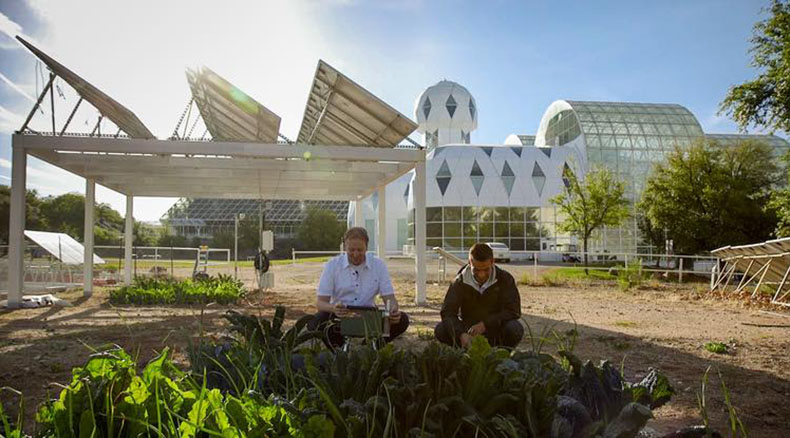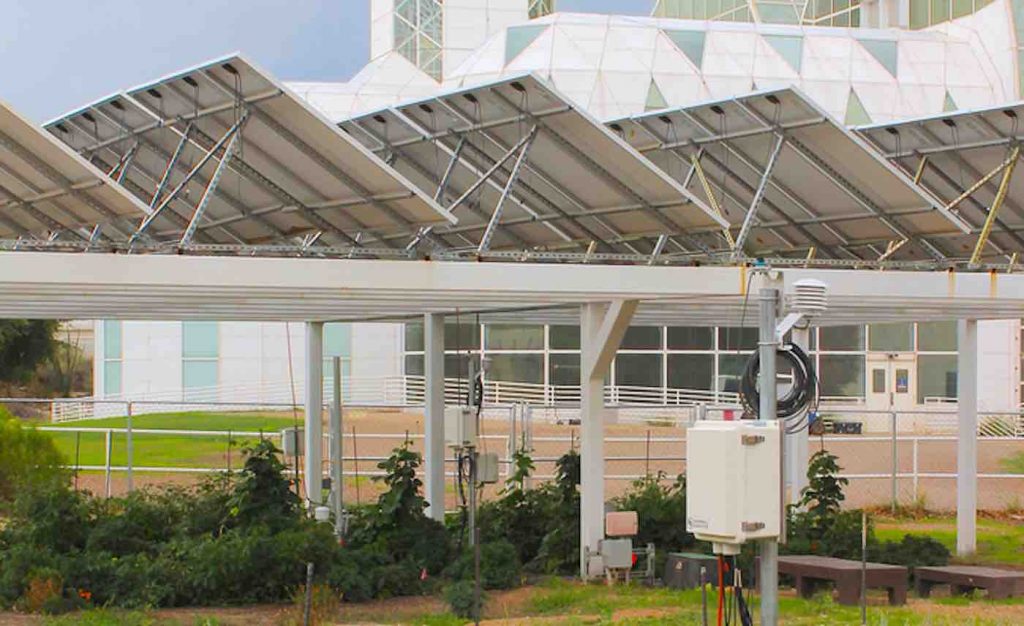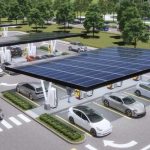
Solar panels may be able to supply us with much more than just clean energy; this new research says that it might also help crops to thrive in arid areas.
- Tinted Solar Panels Can Help Farms Generate Clean Energy While Growing Food
- Dual-Profit Model – Solar Greenhouse
- Green in Tan My
The Exciting Potential of Combining Solar Panels and Agriculture
Agrivoltaics, also known as “solar sharing,” is a promising concept that involves co-locating agriculture and solar photovoltaic panels. This innovative idea has been gaining momentum in recent years, but only a few studies have monitored all aspects of the associated food, energy, and water systems involved. Moreover, none of this research has focused on dryland areas, which are regions that suffer from food production challenges and water shortages but have an abundance of solar energy.
The University of Arizona-led research published in Nature Sustainability this week found that current croplands have the “greatest solar PV power potential” based on an extensive analysis of incoming sunlight, air temperature, and relative humidity. The study found that the agrivoltaics system significantly impacted three factors that affect plant growth and reproduction: air temperatures, direct sunlight, and atmospheric demand for water.
The team used solar photovoltaic panels and regional vegetables to create the first agrivoltaics research site at Biosphere 2. They found that many food crops thrive in the shade of solar panels because they are spared from direct sun, resulting in increased production. For instance, the total chiltepin fruit production was three times greater under the PV panels in an agrivoltaic system, and tomato production was twice as great. Jalapenos produced a similar amount of fruit in both the agrivoltaics system and the traditional plot, but with 65% less transpirational water loss.
Moreover, the agrivoltaics system increased the efficiency of energy production by reducing the temperature of the panels. As solar panels warm, their efficiency drops. By cultivating crops underneath the PV panels, researchers were able to keep the panels cool, thereby increasing their efficiency.
This study’s findings suggest that agrivoltaics can be a sustainable solution to the energy and food production challenges we face today. By combining solar panels and agriculture, we can potentially reduce water usage, increase food production, and generate renewable energy, all in the same place.

“Those overheating solar panels are actually cooled down by the fact that the crops underneath are emitting water through their natural process of transpiration—just like misters on the patio of your favorite restaurant,” Barron-Gafford said. “All told, that is a win-win-win in terms of bettering our how we grow our food, utilize our precious water resources, and produce renewable energy.”
The authors say more research with additional plant species is needed. They also note the currently unexplored impact agrivoltaics could have on the physical and social well-bring of farm laborers. Preliminary data show that skin temperature can be about 18 degrees Fahrenheit cooler when working in an agrivoltaics area than in traditional agriculture.
“Climate change is already disrupting food production and farm worker health in Arizona,” said Gary Nabhan, an agroecologist and co-author on the paper. “The Southwestern U.S. sees a lot of heat stroke and heat-related death among our farm laborers; this could have a direct impact there, too.”
Barron-Gafford and the team are now working with the U.S. Department of Energy’s National Renewable Energy Lab to assess how well an agrivoltaics approach can work in other regions of the country and how regional policies can promote adoption of novel approaches to solve these pervasive problems.




